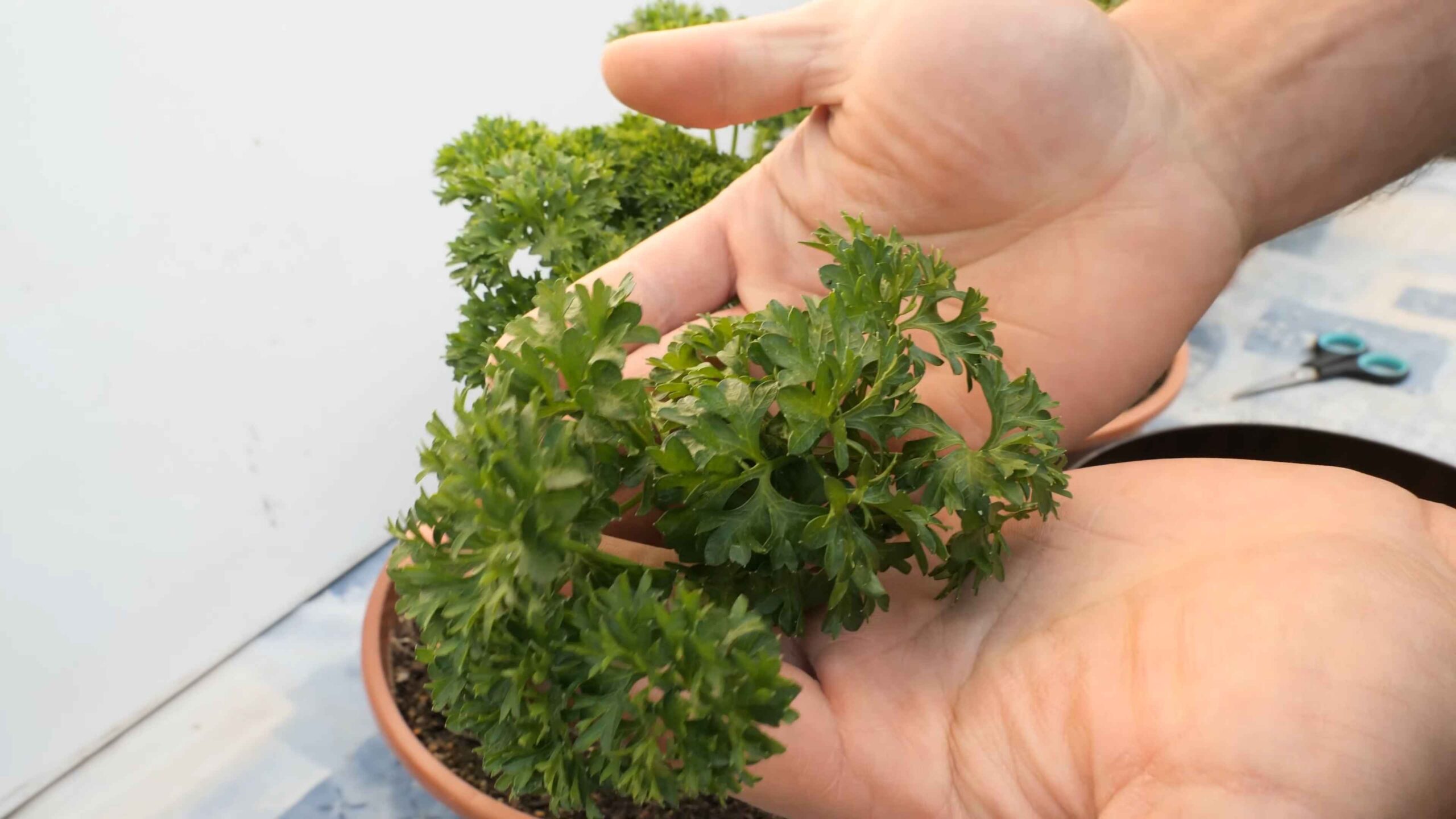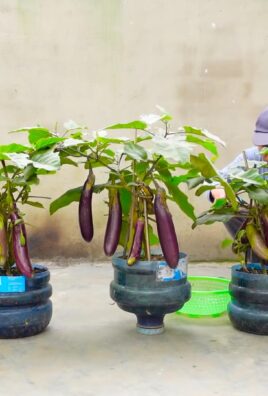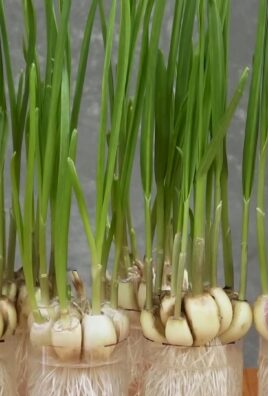Beginner Gardener Parsley Growing can feel daunting, I know! You’re probably picturing those lush, vibrant bunches of parsley you see at the grocery store and wondering how on earth you can achieve that in your own backyard (or even on your windowsill!). Well, fear not, because this isn’t just another gardening guide; it’s your personal roadmap to parsley perfection, filled with easy DIY tricks and hacks that will have you harvesting fresh, flavorful parsley in no time.
Parsley has been cultivated for over 2,000 years, with roots stretching back to the Mediterranean. The ancient Greeks even crowned victors with parsley wreaths! Beyond its historical significance, parsley is a nutritional powerhouse, packed with vitamins and antioxidants. But let’s be honest, store-bought parsley often lacks that fresh, vibrant flavor that truly elevates a dish. That’s where the magic of beginner gardener parsley growing comes in.
In this article, I’m going to share my tried-and-true DIY secrets for successfully growing parsley, even if you’ve never touched a trowel before. We’ll cover everything from choosing the right seeds to creating the perfect growing environment, and even tackle common parsley-growing problems. Get ready to ditch the wilted grocery store parsley and embrace the joy of harvesting your own homegrown goodness!

Growing Parsley: A Beginner’s Guide to Fresh Herbs at Home
Hey there, fellow gardening enthusiasts! I’m so excited you’re diving into the wonderful world of growing your own herbs, and parsley is a fantastic place to start. It’s easy to grow, incredibly versatile in the kitchen, and adds a touch of freshness to just about any dish. This guide will walk you through everything you need to know to successfully grow parsley, even if you’ve never planted a seed before. Let’s get our hands dirty!
What You’ll Need
Before we get started, let’s gather our supplies. Here’s a checklist of everything you’ll need to grow your own parsley:
* **Parsley Seeds:** You can find these at any garden center or online. Choose between curly or flat-leaf (Italian) parsley – both are delicious!
* **Seed Starting Tray or Small Pots:** These will be used to start your parsley indoors.
* **Potting Mix:** Use a good quality potting mix that’s designed for seed starting.
* **Larger Pot (if transplanting):** If you’re starting indoors, you’ll need a larger pot for transplanting your parsley seedlings. Aim for a pot that’s at least 6 inches in diameter.
* **Garden Soil (if planting directly):** If you’re planting directly into your garden, make sure the soil is well-draining and amended with compost.
* **Watering Can or Spray Bottle:** For gentle watering.
* **Sunny Location:** Parsley needs at least 6 hours of sunlight per day.
* **Optional: Plant Food:** A balanced liquid fertilizer can help boost growth.
Starting Parsley from Seed: Indoors or Out?
Parsley can be a bit slow to germinate, so starting it indoors gives you a head start, especially if you live in a colder climate. However, you can also sow seeds directly into your garden if the weather is warm enough. Here’s a breakdown of both methods:
Starting Parsley Indoors
This is my preferred method, as it gives me more control over the growing conditions.
1. **Prepare Your Seed Starting Tray or Pots:** Fill your seed starting tray or small pots with potting mix. Gently press down the soil to create a firm surface.
2. **Sow the Seeds:** Sprinkle a few parsley seeds onto the surface of the soil in each cell or pot. Parsley seeds are small, so don’t overcrowd them.
3. **Cover the Seeds:** Lightly cover the seeds with a thin layer of potting mix (about 1/4 inch).
4. **Water Gently:** Use a spray bottle or watering can with a gentle nozzle to moisten the soil. Be careful not to wash away the seeds.
5. **Provide Warmth and Light:** Place the seed starting tray or pots in a warm location (around 70-75°F) and provide plenty of light. A sunny windowsill or a grow light will work well.
6. **Keep the Soil Moist:** Check the soil daily and water as needed to keep it consistently moist, but not soggy.
7. **Be Patient:** Parsley seeds can take 2-4 weeks to germinate, so don’t get discouraged if you don’t see sprouts right away.
8. **Thin the Seedlings:** Once the seedlings have emerged and have a few sets of true leaves, thin them out so that only one strong seedling remains in each cell or pot.
9. **Harden Off the Seedlings:** Before transplanting your parsley seedlings outdoors, you’ll need to “harden them off.” This process gradually acclimates the seedlings to outdoor conditions. Start by placing the seedlings outdoors in a sheltered location for a few hours each day, gradually increasing the amount of time they spend outside over the course of a week.
10. **Transplant the Seedlings:** Once the seedlings are hardened off, you can transplant them into larger pots or directly into your garden.
Direct Sowing Parsley Seeds in the Garden
If you live in a warmer climate or are patient, you can sow parsley seeds directly into your garden.
1. **Prepare the Soil:** Choose a location in your garden that receives at least 6 hours of sunlight per day. Amend the soil with compost to improve drainage and fertility.
2. **Sow the Seeds:** Sow the parsley seeds directly into the soil, spacing them about 6 inches apart.
3. **Cover the Seeds:** Lightly cover the seeds with a thin layer of soil (about 1/4 inch).
4. **Water Gently:** Water the soil gently to moisten it.
5. **Keep the Soil Moist:** Keep the soil consistently moist until the seeds germinate.
6. **Be Patient:** As with starting indoors, parsley seeds can take 2-4 weeks to germinate.
7. **Thin the Seedlings:** Once the seedlings have emerged and have a few sets of true leaves, thin them out so that they are spaced about 6 inches apart.
Caring for Your Parsley Plants
Once your parsley plants are established, they’re relatively easy to care for. Here are a few tips to keep them thriving:
* **Watering:** Water your parsley plants regularly, especially during hot, dry weather. Aim to keep the soil consistently moist, but not soggy.
* **Fertilizing:** Feed your parsley plants with a balanced liquid fertilizer every few weeks to promote healthy growth.
* **Sunlight:** Make sure your parsley plants are getting at least 6 hours of sunlight per day.
* **Pruning:** Regular pruning will encourage your parsley plants to produce more leaves. Simply snip off the outer leaves as needed, leaving the inner leaves to continue growing.
* **Pest Control:** Parsley is generally pest-resistant, but keep an eye out for aphids or other common garden pests. If you spot any pests, you can try spraying them with insecticidal soap or neem oil.
* **Bolting:** In hot weather, parsley plants may “bolt,” which means they start to produce flowers and the leaves become bitter. To prevent bolting, try to provide some shade during the hottest part of the day. If your parsley plant does bolt, you can still harvest the seeds for future planting.
Harvesting Your Parsley
Harvesting parsley is easy! Simply snip off the outer leaves with scissors or your fingers. Avoid cutting the entire plant back to the ground, as this can weaken it. Regular harvesting will encourage your parsley plant to produce more leaves.
Parsley Varieties: Curly vs. Flat-Leaf
You’ll typically find two main types of parsley: curly and flat-leaf (also known as Italian parsley). Here’s a quick comparison:
* **Curly Parsley:** This variety has tightly curled leaves and a slightly milder flavor. It’s often used as a garnish.
* **Flat-Leaf Parsley:** This variety has flat, deeply lobed leaves and a more robust, peppery flavor. It’s my personal favorite for cooking.
Both varieties are easy to grow and can be used interchangeably in most recipes.
Troubleshooting Common Parsley Problems
Even with the best care, you might encounter a few problems while growing parsley. Here are some common issues and how to address them:
* **Yellowing Leaves:** This can be caused by overwatering, underwatering, or nutrient deficiencies. Check the soil moisture and adjust your watering accordingly. You can also try fertilizing your parsley plants with a balanced liquid fertilizer.
* **Slow Growth:** Parsley can be slow to germinate and grow, especially in cooler temperatures. Make sure your parsley plants are getting enough sunlight and warmth.
* **Pests:** Aphids, spider mites, and other pests can sometimes attack parsley plants. Inspect your plants regularly and treat any infestations promptly with insecticidal soap or neem oil.
* **Bolting:** As mentioned earlier, parsley plants may bolt in hot weather. To prevent bolting, provide some shade during the hottest part of the day.
Extending Your Parsley Harvest
Parsley is a biennial plant, which means it typically lives for two years. However, it often bolts in its second year. To extend your parsley harvest, you can try these tips:
* **Succession Planting:** Sow new parsley seeds every few weeks to ensure a continuous supply of fresh parsley.
* **Overwintering:** In colder climates, you can try overwintering your parsley plants indoors. Dig up the plants in the fall and pot them in containers. Place the containers in a cool, sunny location and water them sparingly throughout the winter.
* **Seed Saving:** Allow some of your parsley plants to bolt and collect the seeds for future planting.
Using Your Fresh Parsley
Now for the best part – using your homegrown parsley! Parsley is incredibly versatile and can be used in a wide variety of dishes. Here are just a few ideas:
* **Garnish:** Sprinkle chopped parsley over soups, salads, pasta dishes, and grilled meats.
* **Flavoring:** Add chopped parsley to sauces, dressings, marinades, and dips.
* **Ingredient:** Use parsley as a key ingredient in dishes like tabbouleh, pesto, and chimichurri.
* **Tea

Conclusion
So, there you have it! Mastering the art of growing parsley, even as a beginner gardener, is entirely within your reach. This isn’t just about adding a garnish to your plate; it’s about cultivating a connection with nature, enjoying the unparalleled flavor of fresh, homegrown herbs, and experiencing the satisfaction of nurturing something from seed to harvest.
This DIY approach to parsley cultivation, focusing on [mention specific technique from the article, e.g., starting seeds indoors, using specific soil mixes, or a particular watering method], is a must-try for several compelling reasons. First and foremost, it empowers you to control the entire growing process, ensuring your parsley is free from harmful pesticides and bursting with natural goodness. Secondly, it’s incredibly cost-effective. Think about how often you buy those small, overpriced bunches of parsley at the grocery store. By investing a little time and effort upfront, you can enjoy a continuous supply of fresh parsley right at your fingertips, saving money in the long run.
But the benefits extend beyond just cost and control. Growing your own parsley allows you to experiment with different varieties. While curly parsley is a classic choice, consider branching out and trying flat-leaf (Italian) parsley for its more robust flavor, or even exploring less common varieties like Hamburg parsley, which is grown for its root. You can also tailor your growing conditions to optimize the flavor and yield of your parsley. For instance, providing ample sunlight and well-drained soil will result in a more vibrant and flavorful herb.
Don’t be afraid to get creative! You can grow parsley in containers on your balcony, in raised beds in your garden, or even indoors on a sunny windowsill. Consider companion planting parsley with tomatoes or roses, as it’s believed to deter certain pests. You can also dry your excess parsley for later use, preserving its flavor and aroma for months to come.
Ultimately, the success of your parsley growing endeavor hinges on your willingness to experiment and learn. Don’t be discouraged if your first attempt isn’t perfect. Gardening is a journey, and every mistake is an opportunity to grow (pun intended!). The key is to be patient, observant, and persistent.
We wholeheartedly encourage you to embark on this rewarding journey of growing your own parsley. It’s a simple yet profound way to connect with nature, enhance your culinary creations, and experience the joy of nurturing life. And most importantly, we want to hear about your experiences! Share your tips, tricks, and triumphs in the comments below. Let’s create a community of beginner gardeners, all learning and growing together. What are you waiting for? Get your hands dirty and start growing your own delicious, fresh parsley today! This **beginner gardener parsley growing** guide is just the start of your journey.
Frequently Asked Questions (FAQ)
Q: How long does it take for parsley seeds to germinate?
A: Parsley seeds are notoriously slow to germinate, often taking anywhere from 2 to 4 weeks, and sometimes even longer. Several factors can influence germination time, including soil temperature, moisture levels, and seed quality. To speed up the process, you can try soaking the seeds in warm water for 24 hours before planting. This helps to soften the seed coat and encourage germination. Maintaining a consistent soil temperature of around 70-75°F (21-24°C) is also crucial. You can use a heat mat to provide bottom heat if you’re starting seeds indoors. Be patient and don’t give up! Even if it takes a while, your parsley will eventually sprout.
Q: What kind of soil is best for growing parsley?
A: Parsley thrives in well-drained, fertile soil that is rich in organic matter. A slightly acidic to neutral pH (between 6.0 and 7.0) is ideal. Before planting, amend your soil with compost, well-rotted manure, or other organic materials to improve drainage, fertility, and water retention. If you’re growing parsley in containers, use a high-quality potting mix specifically formulated for herbs or vegetables. Avoid using heavy clay soil, as it can become waterlogged and inhibit root growth.
Q: How much sunlight does parsley need?
A: Parsley needs at least 6 hours of sunlight per day to thrive. While it can tolerate some partial shade, especially in hot climates, insufficient sunlight can lead to leggy growth and reduced flavor. If you’re growing parsley indoors, place it near a sunny window that receives direct sunlight for several hours each day. You may also need to supplement with artificial light, such as a grow light, to ensure your parsley receives adequate illumination.
Q: How often should I water my parsley?
A: Parsley needs consistent moisture to thrive, but it’s important to avoid overwatering, which can lead to root rot. Water your parsley when the top inch of soil feels dry to the touch. Water deeply, ensuring the entire root zone is moistened. During hot, dry weather, you may need to water more frequently. Mulching around your parsley plants can help to retain moisture and suppress weeds.
Q: How do I harvest parsley?
A: You can start harvesting parsley once the plants are about 6 inches tall. To harvest, simply snip off the outer stems near the base of the plant, leaving the inner stems to continue growing. Avoid cutting more than one-third of the plant at a time, as this can stress the plant and reduce its yield. Regular harvesting encourages new growth and keeps your parsley plants productive.
Q: Can I grow parsley indoors?
A: Yes, parsley can be successfully grown indoors, provided you meet its basic needs for sunlight, water, and soil. Choose a pot that is at least 6 inches in diameter and has drainage holes. Use a high-quality potting mix and place the pot near a sunny window that receives direct sunlight for several hours each day. Water regularly, allowing the soil to dry slightly between waterings. You may also need to fertilize your parsley plants occasionally with a balanced liquid fertilizer.
Q: What are some common pests and diseases that affect parsley?
A: Parsley is generally a relatively pest-resistant plant, but it can be susceptible to certain pests and diseases, including aphids, spider mites, and leaf spot. Aphids and spider mites can be controlled with insecticidal soap or neem oil. Leaf spot is a fungal disease that can cause brown or black spots on the leaves. To prevent leaf spot, avoid overhead watering and ensure good air circulation around your plants. If you notice signs of leaf spot, remove the affected leaves and treat the plant with a fungicide.
Q: Can I dry parsley for later use?
A: Yes, drying parsley is a great way to preserve its flavor and aroma for later use. There are several ways to dry parsley, including air drying, oven drying, and using a dehydrator. To air dry parsley, simply tie the stems together in small bunches and hang them upside down in a cool, dry, well-ventilated place. To oven dry parsley, spread the leaves in a single layer on a baking sheet and bake at a low temperature (around 170°F or 77°C) for several hours, or until the leaves are completely dry and brittle. To use a dehydrator, follow the manufacturer’s instructions. Once the parsley is dry, store it in an airtight container in a cool, dark place.
Q: Is parsley a perennial or an annual?
A: Parsley is technically a biennial, meaning it has a two-year life cycle. In the first year, it produces leaves, and in the second year, it flowers, sets seed, and then dies. However, parsley is often grown as an annual, as the leaves tend to become bitter after the plant flowers. To keep your parsley plants productive, it’s best to start new plants from seed each year.





Leave a Comment